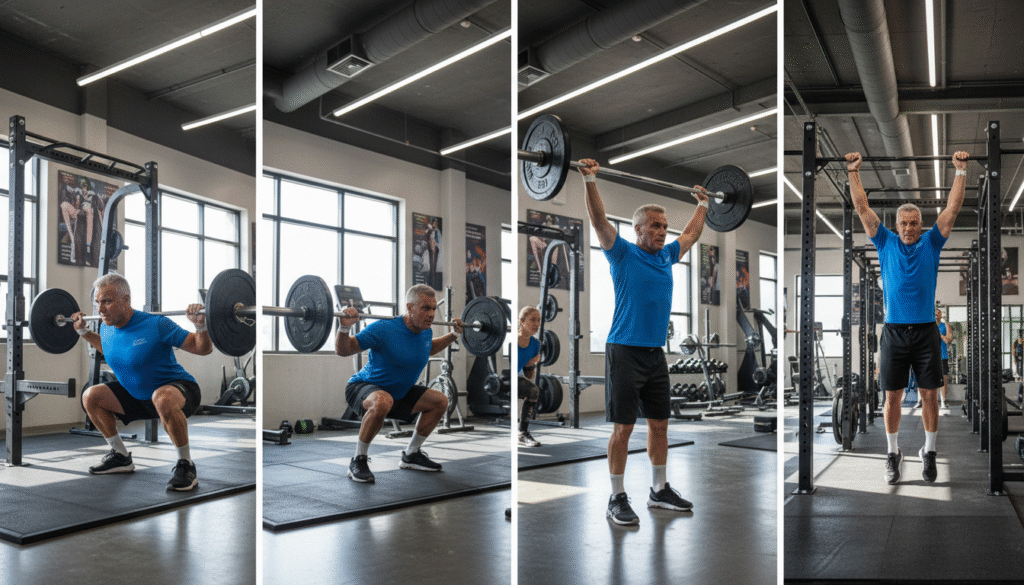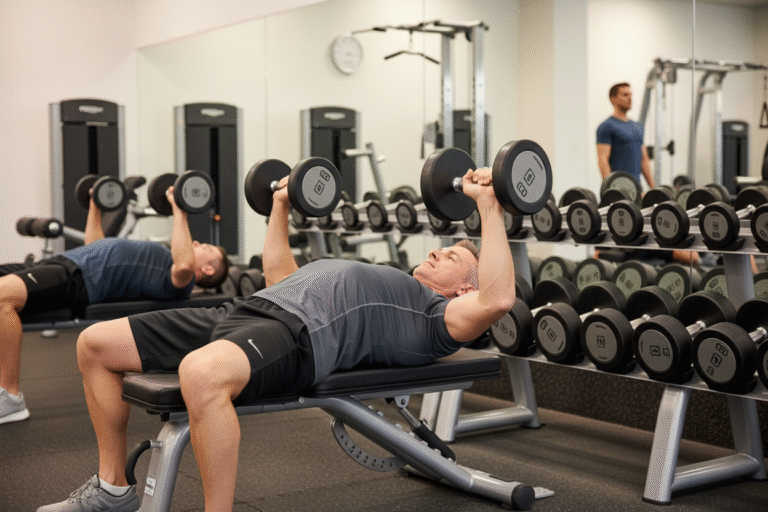Is It Healthy to Workout 7 Days a Week? Your Real-World Guide to Fitness Balance
Is it healthy to workout 7 days a week? Short answer is YES!
There’s one simple rule most people in fitness swear by: don’t work the same muscles every day. Give them a chance to recover. The easiest way to do that? Mix things up — balance your strength training with some cardio. It keeps your body guessing, your workouts fresh, and your progress steady.
So, read on as this guide keeps the science and shows you how to stay active daily without burning out.
The Daily Workout Dilemma: Can You Really Exercise Every Single Day?

I get the pull of a daily workout. It feels clean and disciplined—like you’re stacking wins one sweat session at a time. I’ve chased that streak too, the one where you check the box every day and feel unstoppable… right up until your legs stage a protest.
Here’s the grown-up take: whether it’s healthy to workout 7 days a week comes down to how you do it. Goals, intensity, sleep, stress, food—they all matter. The trick isn’t “never miss.” It’s “train smart enough to come back tomorrow.”
Physical Activity: What Health Experts Say About Working Out Daily
The National Institutes of Health suggests two anchors:
- 150 minutes of moderate cardio per week (or 75 minutes vigorous)
- Strength training for major muscle groups at least twice per week
That’s the health baseline. If you want to move every day, structure becomes everything.
Trainer-physician Dr. Mike Bohl’s rule that saved my joints: don’t hammer the same muscle group two days in a row. Most muscles need about 24–72 hours to bounce back, depending on how hard you went and your training age. The American College of Sports Medicine backs it up: vary the stimulus, protect recovery, keep moving.
Active Recovery: Why Rest Days Are Where the Good Stuff Happens
I used to feel guilty on rest days—like progress was slipping away while everyone else was grinding. Then I learned the obvious: the workout is the stimulus; recovery is the adaptation. Those tiny muscle-fiber tears you make during lifting? They rebuild when you rest. That’s literally how you get stronger.
Rest doesn’t always mean doing nothing. Active recovery can mean easy walks, light cycling, gentle yoga, an mobility. It helps keeps your blood flowing without adding stress. My go-to reset: a 20‑minute walk and 10 minutes of hips/shoulders mobility. Cheap, cheerful, effective.
A 7-Day Plan That Won’t Break You
Here’s a practical template for training daily without frying your system. Adjust sets and time to your level.
- Monday — Upper body strength training
45 minutes. 8–12 reps. 9–12 total working sets (push + pull).
Example: Bench or push-ups, rows, overhead press, lat pulldown. - Tuesday — Cardio (moderate)
30–40 minutes at a conversational pace (jog, bike, swim). - Wednesday — Lower body strength
45 minutes. 6–12 reps. 9–12 sets.
Example: Squat or leg press, Romanian deadlift, lunges, calves. - Thursday — Active recovery
30–45 minutes easy walk or yoga. Mobility for hips/shoulders. No heroics. - Friday — Full‑body lift (compound focus)
45–60 minutes. 6–10 total working sets, mostly compounds.
Example: Deadlift or trap‑bar deadlift, incline press, row, core. - Saturday — HIIT or tempo cardio
15–25 minutes HIIT (e.g., 30s hard / 60s easy × 10) or 20–30 minutes steady tempo. - Sunday — Light cardio + stretch
20–40 minutes easy movement. Finish with 10 minutes of stretching.
Key rule: keep effort and muscle groups rotating so you’re never crushing the same area two days straight.
Why Compound Movements Are Your Best Friend

When talking about compound movement, think about these exercise routines: squats, deadlifts, rows, presses, and pull-ups. They are you real MVPs in your training sessions. These exercise routines target multiple muscle groups at once. As a result, you get more exercises done in less time.
So instead of spending hours executing a dozen tiny isolation exercises, I advise you try to focus on these big lifts. It will make your workout easier to manage and boosts your progress. Plus, they build functional strength that carries over into everyday life.
Aiming to lift those grocery bags in one go? This is it. It also helps you improve posture and prevent injury.
Trust me—once I ditched all the tiny isolation moves and focused on a few big, powerhouse lifts, everything clicked. My workouts got shorter, my results got better, and I actually had the energy to sit down and enjoy dinner.
The Mental Side No One Warned Me About
Working out every day isn’t just about what happens to your body—it also affects your mind in ways you might not expect. On weeks I move consistently, I’m calmer, kinder, and more patient. The British Journal of Sports Medicine links regular exercise with better mood and lower stress—and honestly, I feel that.
Here’s the thing: if you keep pushing without giving your body a chance to recover, it’ll push back. Workouts that used to feel great start feeling heavy. You’re wired but exhausted, a little snappy for no reason, and you might even start dreading the gym. That’s not you being weak—that’s your body waving a big flag saying, “Hey, I need a break.”

Some days you just don’t have it, and that’s okay. Really. Everybody has those days. Easing up or taking a rest day isn’t slacking—it’s paying attention. Your body knows what it needs better than any plan or app. When you listen instead of forcing it, that’s when you actually make progress.
And remember, your head matters as much as your muscles. Take care of both, and the whole fitness thing starts to feel a lot more sustainable—and a lot more enjoyable.
Red Flags You’re Overtraining
- Soreness that lingers for days
- Sleep gets weird (tired but wired)
- Performance dips for a week or more
- Little aches become “why does my knee feel 90?”
- Flat mood, low motivation
If a few ring true, trade 1–2 hard days for active recovery this week. Your progress won’t vanish—odds are it’ll rebound.
Beginner? Please Don’t Start With Seven
If you’re new, the fastest progress comes from consistency, not punishment.
- Start with 2–3 full‑body sessions per week.
- Focus on form: squat, hinge, push, pull, lunge.
- Add easy cardio 1–2 other days if you want.
- After 6–8 weeks, consider a fourth or fifth day.
Those first months are golden. Protect them. Stay consistent. “Newbie gains” show up without daily training.
Will Working Out Every Day Help You Lose Weight?
Move your body every day — it all adds up. Regular activity keeps your calorie burn going, and when you combine it with strength training (to maintain muscle) and a balanced approach to food, you’ve got a strong foundation. HIIT can be great for efficiency, and steady cardio still has its place — but you don’t need to do either every day.
If progress slows down, check in on the basics first: your sleep, daily steps, and stress levels. Don’t just push harder with more workouts — sometimes, recovery is what your body really needs.
How Long Should You Train Per Week?
Think weekly totals, not marathon sessions.
- Cardio: ~150 minutes moderate (or ~75 vigorous)
- Strength: generally 10–20 sets per muscle per week across 2–4 sessions
• Beginners: 6–10 sets
• Intermediates: 10–16
• Advanced: up to 20+ with planned deloads
Short on time? “Exercise snacks” (10–15 minutes) add up fast.
Should You Do the Same Workout Every Day?
You can, but you’ll probably stall. Your body adapts to repeat stress. Progress—and your joints—like variety. Mix movements, rep ranges, and intensity. For cardio, blend easy long work with short hard efforts.
Recovery Time: The Boring Stuff That Changes Everything
- Sleep: 7–9 hours, similar bedtime most nights
- Protein: roughly 1.6–2.2 g/kg body weight daily
- Steps: 6–10k on non‑lifting days keeps you loose
- Hydration: aim for pale yellow; sip all day
- Deload: every 4–8 weeks, reduce volume 30–50% for a week
Who Shouldn’t Train 7 Days (for now)
- Brand‑new lifters (under ~8–12 weeks of consistent training)
- Anyone short on sleep or under heavy life stress
- Returning from injury or illness
- If your clinician says “not yet”
My Take, After Messing This Up a Few Times
I’ve worn the “no days off” badge. Looked cool, felt awful. These days I train 5–6 times a week, sometimes seven with an easy day. I rotate muscles, keep Fridays efficient, and protect sleep like it’s part of the program—because it is. The result? Stronger, happier, fewer mystery aches, and far less ibuprofen.
The Bottom Line: Is It Healthy to Workout 7 Days a Week?
It can be—if recovery is part of the plan. Rotate muscle groups. Mix strength and cardio. Schedule active recovery. Sleep, eat, hydrate. And when your body taps the brakes, listen. Daily training works when tomorrow’s workout is still possible.
Quick Tips You Can Use This Week for Your Fitness Goals
- Don’t train the same muscles two days in a row
- Mix effort: hard, easy, moderate—repeat
- Keep compound lifts at the center
- Sleep like it’s your job
- Track soreness, sleep, and performance; adjust if two go south
- Consistency > intensity, always
FAQs
- Is it healthy to workout 7 days a week?
Yes—if you rotate muscles, vary intensity, and include recovery. - How many rest days do I need?
Most people do best with 1–2 true rest or active recovery days. - Can I do the same workout daily?
Not ideal. You’ll adapt, plateau, and risk overuse. - How long should workouts be?
Think weekly totals: ~150 minutes cardio + 10–20 sets per muscle. - I’m a beginner. What should I do?
Start with 2–3 full‑body days, focus on form, build slowly. - Mental health effects?
Regular exercise boosts mood; overdoing it can drain it. - Will daily workouts speed weight loss?
They can help, but recovery and nutrition make it sustainable. - Signs I’m overtraining?
Lingering soreness, worse sleep, dropping performance, low motivation. - How do I prevent injuries?
Vary movements, avoid back‑to‑back same muscle days, warm up, and respect pain signals.








2 Comments
Comments are closed.